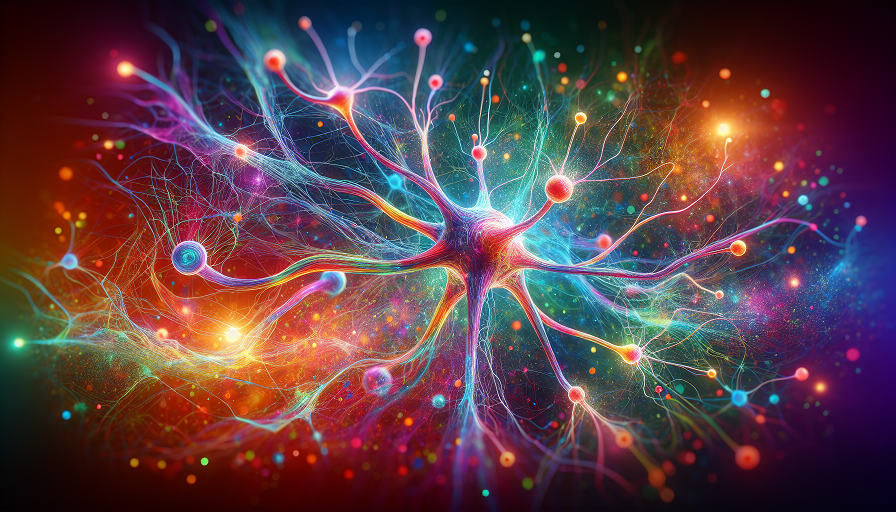
Imagine a future where computers don’t just mimic human intelligence but are powered by living neurons, integrating biology and technology in unprecedented ways. This vision is becoming a reality in the emerging field of neuron-based computing. By leveraging the fundamental properties of neurons — the brain’s communication cells — scientists and engineers are revolutionizing artificial intelligence (AI), advancing neuroscience, and exploring new ways to process information.
Contents
What Is Neuron-Based Computing?
Neuron-based computing refers to the development of computational systems inspired by or directly utilizing biological neurons. Unlike traditional computers that process information using binary code (1s and 0s), neuron-based systems aim to emulate the brain’s ability to process information through dynamic and interconnected networks.
This field can be divided into two main approaches:
- Biological Computing: Utilizing living neurons or neuron-like systems to perform computations.
- Neuromorphic Computing: Designing hardware and software systems that mimic the structure and functionality of neural networks in the brain.
Both approaches aim to overcome the limitations of traditional computing, such as linear processing and energy inefficiency, by harnessing the brain’s remarkable adaptability, parallel processing, and energy efficiency.
Why Neurons? The Brain’s Computational Power
The human brain is often described as the most powerful computer in existence. Its network of approximately 86 billion neurons can process vast amounts of information simultaneously, adapt to new challenges, and learn from experience. Key features of neurons that make them ideal for computing include:
Parallel Processing
Unlike traditional computers that process tasks sequentially, the brain performs millions of operations in parallel. Neurons communicate via synapses, allowing for simultaneous transmission of information across vast networks.
Energy Efficiency
The brain operates on just 20 watts of energy, roughly the power needed to light a dim bulb. This efficiency stems from the way neurons encode and transmit information using sparse, low-energy spikes.
Adaptability and Learning
Neurons exhibit plasticity, the ability to strengthen or weaken connections based on experience. This property underpins learning and makes neuron-based systems inherently flexible and adaptable.
Breakthroughs in Neuron-Based Computing
Neuron-based computing is no longer just theoretical. Recent advancements are bringing this vision to life, with innovations ranging from neuromorphic chips to systems incorporating biological neurons. Here are some of the most exciting breakthroughs:
Neuromorphic Hardware
Neuromorphic chips, such as Intel’s Loihi and IBM’s TrueNorth, are designed to mimic the architecture of the brain. These chips use spiking neural networks to process information, making them faster and more energy-efficient than traditional processors.
- Applications: Neuromorphic hardware is being used in AI, robotics, and real-time data analysis.
- Example: Intel’s Loihi chip has demonstrated the ability to recognize smells, showcasing its potential for sensory applications.
Biological Neural Networks
Researchers are experimenting with using living neurons in computational systems. For example, neurons cultured in a lab can form networks that respond to stimuli, demonstrating learning and memory-like behavior.
- Example: Scientists at Cortical Labs have created “DishBrain,” a system where neurons grown on a chip learned to play a version of the video game Pong.
Brain-Computer Interfaces (BCIs)
BCIs bridge the gap between biological brains and digital systems. These interfaces allow neurons to directly communicate with computers, enabling applications in medicine, communication, and even gaming.
- Example: Neuralink, founded by Elon Musk, is developing implants that connect the brain to digital devices, with the goal of treating neurological disorders and enhancing human cognition.
AI Inspired by Neuroscience
Advances in neuron-based computing are influencing AI development. Deep learning models, for instance, are inspired by the way neurons form connections and process information in the brain.
- Example: Transformers, a type of neural network architecture, have revolutionized natural language processing and are used in systems like ChatGPT and Google Translate.
Challenges in Neuron-Based Computing
Despite its promise, neuron-based computing faces significant challenges. These include:
Complexity
The brain’s complexity is staggering, and replicating its structure and functionality in computational systems is a monumental task. Even the most advanced neuromorphic chips are far less sophisticated than the human brain.
Integration of Biological and Digital Systems
Combining living neurons with silicon-based systems presents technical and ethical challenges. Maintaining the viability of biological neurons in computational devices is particularly difficult.
Energy and Scalability
While neuron-based systems are more energy-efficient than traditional computing, scaling them for widespread use without losing efficiency remains a challenge.
Potential Applications of Neuron-Based Computing
The possibilities for neuron-based computing are vast, with applications spanning technology, healthcare, and beyond. Here’s a glimpse of its transformative potential:
Medical Advances
Neuron-based systems could revolutionize medicine by enabling personalized treatments for neurological disorders. For example, BCIs could restore movement in paralyzed patients or help those with speech impairments communicate.
Artificial Intelligence
Neuron-inspired computing could lead to more efficient and adaptable AI systems capable of learning and problem-solving in ways that mimic human intelligence.
Environmental Monitoring
Neuromorphic sensors could analyze environmental data in real-time, aiding in climate research and disaster response.
Education and Cognitive Enhancement
Advanced learning systems powered by neuron-based computing could provide personalized education, helping students learn more effectively.
Bridging Biology and Technology
Neuron-based computing is at the forefront of a technological revolution, merging the fields of biology, neuroscience, and computer science to create systems that mimic or harness the brain’s incredible capabilities. While there are challenges to overcome, the potential benefits are immense, from advancing AI to revolutionizing medicine and beyond.
As research continues to push the boundaries of what’s possible, the intersection of neurons and technology will undoubtedly reshape how we interact with the world. The pioneering work in this field is not just about building better machines — it’s about unlocking the mysteries of the brain and using that knowledge to improve lives and expand human potential.

